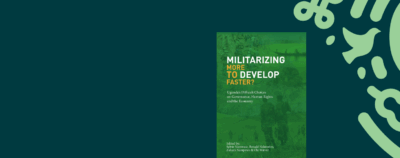“This pandemic is the best time to get married and the worst time to pass away,” my father summed up in August 2020 at the end of a week when my parents attended a Muslim wedding and a relative’s funeral. Both community events were severely curtailed as Covid-19 ran its course in Singapore, where reopenings have been cautious and penalties for infractions severe. Wedding parties of up to one-hundred persons were permitted only in October 2020, doubling the number of people allowed from when restrictions were initially eased in August. My father’s varying sentiments toward these everyday gatherings of co-religionists attest to the ways in which Muslim responses to coronavirus restrictions have mutated notions of community. Where Singapore’s Malay-Muslim community has traditionally conceptualized notions of togetherness through the public commemoration of personal events, the hasty digitalization of these events is bringing “new Muslim publics” into community life in unexpected ways. In the wake of the coronavirus, the merger of organic in-person gatherings and electronically mediated interactions forces a reckoning with a cyborg community body.
The cyborg community was long in the making. In the New Cambridge History of Islam, Jon Anderson utilizes “new Muslim publics” to describe emerging, global constituencies who accessed Islamic discourse through new media. He argues that electronic media altered “the ancient formulary of a ‘whole way of life’ to the very modern registers of ideology, on the one hand, and ‘privatised’ religion for individual consumption on the other.” In other words, new Muslim publics live and translate ad-deen-ul-Islam in various ideological stripes, adopting personal religiosity to detach unity from community. Online, adherents of folk religion and the traditional highly learned cede ground to what can be viewed as “the realm of a pious, and growing, bourgeoisie,” or, less kindly, “lumpen intellectuals” invested in reform.1On “lumpen intellectuals,” Anderson cites Olivier Roy, The Failure of Political Islam, (Harvard University Press, 1994). In Anderson’s rendering, this group is an extension of the reading publics engendered by print more than a century ago. New Muslim publics constitute audiences and opinion geographically and ideologically diverse, but reflective of a new class of digital citizens. In my view, prior to the pandemic, this new class did not make its presence felt in everyday weddings and funerals, mosques and madrasahs. Such spaces were still dictated by community observance of particular religious rituals in person, the forms of which were not renegotiable despite active online Muslim communities. In a pandemic, though, the digital melts into the material. Everyday assemblies become a moment of recognition as a Muslim community confronts how it has changed into a body with classes both organic and electronic.
When the Singapore state imposed an island-wide lockdown in early April 2020, it did not quite expect panicked couples to rush to the Registry of Muslim Marriages (ROMM), demanding clarification on when their weddings could be rescheduled. Videos of the crowd and overwhelmed ROMM staff emerged on social media; a young kadi poked mild fun at the Malay-Muslim crowd, posting on Instagram: “What? #panicbuying? That is too mainstream for us Malay, we chose #panicmarrying.” The anxiety partly stemmed from financial reasons but more deeply, it spoke to an uncertainty about navigating premarital relationships in ways perceived as Islamic under such circumstances. Some public comments on the kadi’s post chide him for making light of the situation. For these interlocutors, he was missing the point. To paraphrase their essential point, it is all very well to laugh but who should bear the blame for couples unable to marry that fall into sin during the period?2“Falling into sin” has varying conceptualizations, including any unchaperoned interaction between an unmarried couple on one extreme end and premarital sex on the other.
The stress of Muslim weddings during the pandemic meets a longer-running struggle: How do new digital spaces affect the kinds of intimacies outside of marriage that are seen as permissible? Muslim dating apps have proliferated over the past decade, Muzmatch and Minder (a play on Tinder) being the most popular. For some Muslims who wish to enforce chasteness in their romantic relationships, such apps could be used as a permissible workaround to get to know a person with a view toward marriage and without physical entanglements implicated in in-person dating. For others, these digital spaces represent a step toward the sin of premarital sexual intimacy. The lines become even more blurred when one considers how to position desires previously submerged from community view but emerging in the sights of online Muslim publics. As with the public at large, the pandemic lockdown digitized intimacy, generating creative ways of articulating closeness without physical touch. These articulations surface not only heterosexual connections outside marriage but also queerness. I recall seeing a picture in my social media feed of a Muslim man Zooming with his same-sex partner. One hand was held up on his computer screen and melded with his partner’s hand on his own chest, giving the impression of a single hand on a heart. Expressions of desire and love that would raise opprobrium in a conventional Muslim public find tentative, temporary space online, many in private Instagram stories that disappear after twenty-four hours. Their potential proliferation in a realm without touch crystallized into deeper anxieties about religiously permissible intimacy and found form in a crowd upset about being able to solemnize weddings offline for a time.
Regulations on wedding ceremonies have since been eased. An outright ban gave way to online solemnizations and later, socially distanced ceremonies capped at fifty people. It is in this constrained space that some couples in Singapore would agree with my father that it is the best time to hold a wedding. Pandemic wedding ceremonies could be confined to cherished family and friends, free of the social obligation to stage an expensive, crowded affair with an eye toward making an impression rather than cultivating kinship. Even before the pandemic, showy weddings and the inflationary mahr (dowry) were common bugbears among lumpen intellectuals of the Muslim public e-sphere who, in forums and blogs, expressed their unease that such affairs were not only extravagant but not Islamic. The challenges brought about by Covid-19 demonstrated that the function of announcing the couple’s new status to the community through a large, in-person wedding could be replaced with WhatsApp congratulations and a series of private celebratory get-togethers after. The cyborg community wedding eliminates not only expense but customary interactions with extended relatives, relatives of relatives, and connections once removed that are usually not what the couple themselves are excited about during their ceremonial union. In a pandemic, through digital means, love flips inwards.
However, if there is a new, young public content with small weddings, hardly anyone is happy about small funerals, even when going digital allows for remote attendance. Grief seemed to seek physical embrace outside digital networks; the number of mourners attending one’s funeral prayers almost became a yardstick for success in this earthly life and the hereafter. Pre-pandemic, sparsely attended funerals might be uncharitably spoken about in hushed whispers that related the small number of mourners to a less-than-pious lifestyle. In the lockdown stage, that feeling of wrongness was compounded by the stealth needed to attend a funeral to bypass unsympathetic neighbors who might report gatherings that exceeded the permitted size of five.
While one could intellectually accept the argument that the short row of praying mourners does not reflect the grace of God on the departed whatsoever, grief demands to be shared. Moreover, it demands to be shared through physical presence. Theoretically, funerals could have mutated into a blended ritual that exponentially expanded the number of prayers offered on behalf of the deceased. One could arrange for a Zoom prayer session, post the meeting details on Facebook, and request friends to attend and pray together, potentially gathering even more mourners than an in-person funeral would have. However, I received news of the passing of relatives and acquaintances through digital means during lockdown, and none was accompanied by a digital funeral or remembrance. Death, the ultimate severance, underscored that the intangible virtual presence of new Muslim publics could not satisfy the need for physical solidarity among Muslim communities.
The pandemic may have revealed Muslim communities as cyborgs but what does that signify? I don’t have easy answers. We have yet to fully understand this hybrid interface. Perhaps such uneasy fusion of physical and digital communities renders it important to move beyond thinking about new Muslim publics as striated classes and probe instead its everyday sociality. Beyond the struggle for ideological authority, the emergence of intermediaries and the disciplining of religious knowledge, these publics extend the physical community into a networked composite that is more the sum of in-person worshippers and online discoursers. Residual to this hybrid body are affinities, emotions, and intellectual connections that the community lives on. It becomes imperative to probe these links if we are to understand how a larger Muslim ummah takes on a technological personhood.













